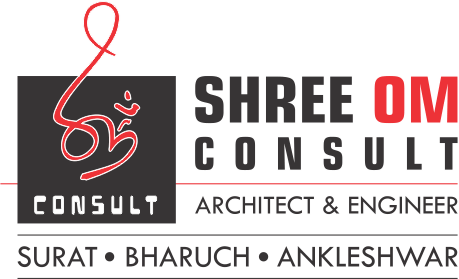
What Makes a Perfect 21st Century Home? Key Design Considerations
In the fast-changing world of the twenty-first century, the notion of the perfect house has evolved significantly. Modern homeowners want homes that effortlessly combine innovation, sustainability, and comfort while reflecting modern lifestyles and beliefs. Understanding these significant design aspects is critical for residents in Bharuch, Surat, and Ankleshwar when working with local real estate and architectural experts to build a house that satisfies today’s requirements while anticipating future demands.
Sustainable Design: Building for the Future
Sustainability has become an essential component of modern house design. Incorporating eco-friendly elements reduces environmental effects while also increasing long-term economic savings. The key sustainable design aspects are:
Energy Efficiency: Utilizing energy-efficient lighting, such as LED bulbs, and installing solar panels can significantly reduce energy consumption and lower utility bills.
High-Quality Insulation: Proper insulation materials help maintain indoor temperatures, reducing the need for excessive heating or cooling and thereby conserving energy.
Water Conservation: Implementing rainwater harvesting systems and using water-efficient fixtures like low-flow toilets and faucets can substantially decrease water usage.
Open Concept Living: Enhancing Space and Interaction
The move to open floor layouts indicates a desire for more flexible and adaptable living areas. Open-concept designs encourage interaction, optimize natural light, and provide a feeling of space, making houses seem more welcoming and adaptable to different activities and lifestyles.
Smart Home Integration: Embracing Technology
Integrating smart home technology enhances convenience, security, and energy efficiency. Features such as home automation systems, voice-activated assistants, and energy management tools allow homeowners to control various aspects of their environment seamlessly.
Minimalism and Clean Lines: Simplifying Aesthetics
Modern house design frequently emphasizes minimalism, which is defined by clean lines and uncluttered areas. This method promotes a sense of serenity and order, allowing homeowners to concentrate on vital features and customize their rooms without interruptions.
Natural Materials and Biophilic Design: Connecting with Nature
Natural materials such as wood and stone, along with biophilic design ideas, help to increase the link between indoor and outdoor environments. Large windows, indoor gardens, and the use of natural textures boost well-being while also bringing the outside inside.
Flexible Home Offices: Adapting to New Work Realities
Dedicated and ergonomic home office spaces have become increasingly important as remote work has grown in popularity. Designing places that provide comfort, abundant natural light, and technological integration promotes productivity and work-life balance.
Outdoor Integration: Expanding Living Spaces
Modern dwellings are increasingly intended to blur the distinction between indoor and outdoor life. Large sliding doors, outdoor kitchens, and comfy seating spaces all contribute to increased living space and a stronger connection with nature.
Sustainable Materials: Choosing Eco-Friendly Options
Sustainable building materials, such as bamboo, recycled materials, and locally produced items, help to lessen construction’s environmental effects. These materials are not only environmentally beneficial, but they also bring character and warmth to your house.
Collaborating with Local Experts
For people of Bharuch, Surat, and Ankleshwar, collaborating with local real estate and architectural advisors is critical to bringing these design concerns to life. Local specialists have vital knowledge of area construction standards, climatic concerns, and cultural preferences, ensuring that your house is not just contemporary and sustainable, but also complements its surroundings.
Finally, designing the ideal 21st-century house requires a healthy balance of innovation, sustainability, and comfort. By concentrating on these essential design issues and working with competent local experts, homeowners can create rooms that are visually beautiful, ecologically friendly, and appropriate to modern lives.
Conclusion
The ideal 21st-century house effortlessly incorporates current technology, environmental practices, and flexible living areas. By emphasizing energy efficiency, smart home technology, and eco-friendly materials, homeowners can create homes that are not only visually pleasing but also future-proof. Working closely with local specialists ensures that houses meet area demands while balancing comfort, function, and environmental responsibility. A well-designed house today is an investment in a brighter, more sustainable future.

0 comments